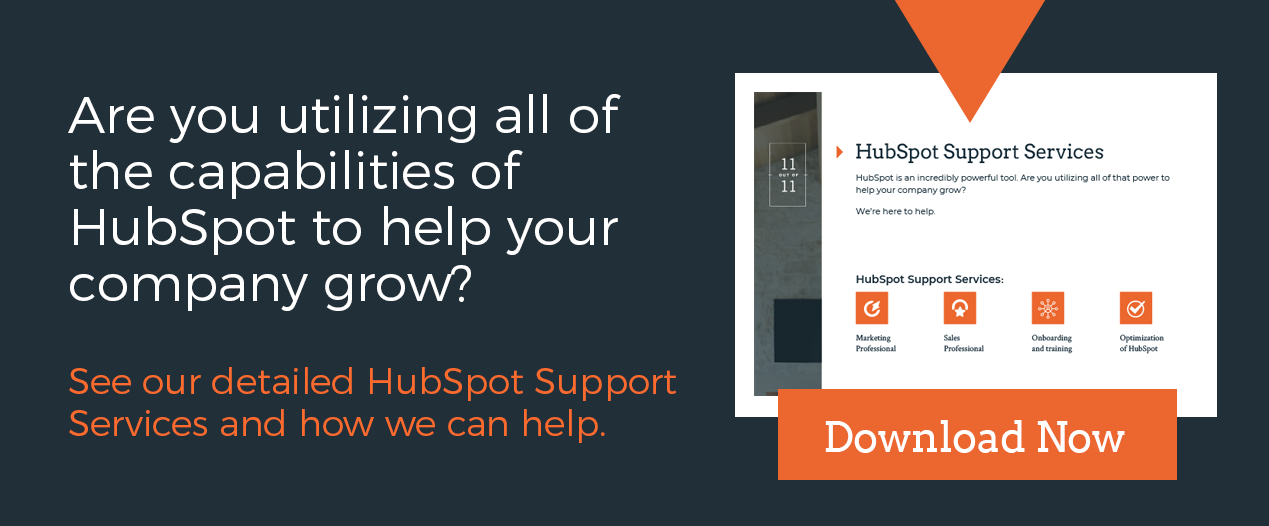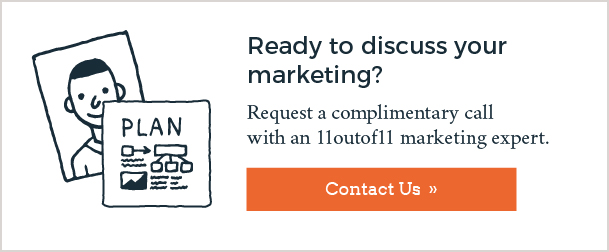A sales pipeline is a set of stages that guides your company through the buyer’s journey. A good B2B pipeline keeps sales and marketing aligned and helps identify the status of available sales opportunities to better determine the revenue they can generate.
It’s hard work. Recent studies show 61% of B2B marketers send leads to sales but only 27% are sales-ready, just 13% convert into opportunities and only six percent will convert to deals.
However, your pipeline helps tremendously by providing insightful data critical to performance. You can gain understanding about the overall health of the business, sort out improvement opportunities, and ensure best practices throughout your entire sales process.
As important as B2B pipelines are to scaling revenue growth, there’s no one-size-fits-all strategy to pare down the complexity of your company’s specific stages. There are lots of ways to do it depending on the needs of your business.
We’re sharing three ideas for pipeline stages that can help you brainstorm an ideal customization.
Common B2B Pipeline Stages
The three most common stages of a sales pipeline are lead nurturing, lead qualification, and closed deal.
Stage #1 Lead Nurturing
During this stage, your salespeople are building trust that helps to convert interested prospects into sales-ready leads into customers. It’s time to smoothly and seamlessly guide them to say yes to the deal. This means being there for prospects, ready and willing to answer their questions and focusing on the potential positive impact of your solutions.
Stage #2 Lead Qualification
Lead qualification involves deciding which prospects are more open to hearing your solutions (a marketing qualified lead or MQL), the prospects who are ready to go to the next level (a sales qualified lead or SQL) and those to weed out of the sales pipeline.
To optimize on a sales opportunity, your team will try to understand their pain points, use them to show how your product or service can offer a solution and either close the deal or disqualify the lead.
Stage #3 Closed Deal
During this stage, leads make purchasing decisions and become part of your revenue stream. However, the relationship with the customer does not end here. B2B companies can increase their return on investment after the sale by regularly engaging customers and adding value to their businesses.
Sales Cycle Pipeline Stages
Even though not every sale or customer interaction will follow the same path, typically there are seven stages to a sales cycle. They include:
Stage #1 Prospect for Leads
During this stage, your sales team will identify potential prospects and educate them on what your product/service does that no one else does to mitigate their issues and solve their problems.
Stage #2 Contact Potential Customers
Your team will establish contact with potential clients with the hope of setting up a more formal meeting. This could take the form of a phone call, email, or a more traditional sales letter. The communication channel will depend on the type of prospect and the business they’re in.
Stage #3 Qualify Potential Customers
This vetting process can be initiated during the initial contact with a prospect or during the first meeting. Your sales team will want to find out if the contact person is a decision maker and if they are actually interested in purchasing your product or service. Qualifying a potential customer helps your team save time because they want to be pitching only to qualified leads.
Stage #4 Showcase Your Product/Service/Brand
Sales people should be ready to demonstrate how your product/service solves an issue or challenge the customer is facing, how using your product/service will improve their day-to-day operations, and how your company can do this better than anyone else.
Stage #5 Mitigate Customer Objections
Even the most enthusiastic prospects will have reservations about your product/service, grumbling about the price, the contract, the terms, you name it. It’s time for your sales team to brush off their negotiation skills. They can ask questions to get the context of prospects’ hesitation so they can understand their concerns. Then they can reframe the pitch to acknowledge and banish those concerns.
Stage #6 Close The Sale
By building a foundation through the previous stages in the sales cycle, your team will be able to read a prospect’s mindset and tailor their closing pitch to match. Keep in mind if a sale isn’t closed during the first meeting, it doesn’t mean the sale is over. The sales cycle is still in motion until either a sale is made or a prospect declines to proceed any further.
Stage #7 Generate Referrals
During this stage, your sales team can ask newly satisfied clients for referrals right after closing a sale because it’s the time they’re likely in the best position to recommend other prospects. Your team can always ask for referrals later on as the business relationship grows.
Essential B2B Pipeline
One of the most important aspects for your Customer Relationship Management (CRM) is your deal pipeline. A modern B2B sales pipeline has nine essential stages and can be updated automatically with technology (such as HubSpot’s Sales Hub) that sets the appropriate stage based on defined criteria. The stages include:
Stage #1 Identify Lead and Lead Type
Your sales team will probably talk to different types of contacts during the sales process. Each type has different characteristics that influence their respective close rates. Here’s a list from HubSpot:
- Suspect - a company in your database that fits your ideal customer profile and has the potential to buy your product or service.
- Prospect - a contact at a suspect company who has a need and may be searching for a solution sometime in the next 12-24 months.
- Lead - a prospect who has taken an action or responded to a marketing or sales campaign and shows some level of interest in your product. Types of leads include:
- Inbound leads - leads that convert on your website.
- Marketing Qualified Leads (MQL) or Sales Qualified Leads (SQL) – leads who have certain characteristics that would define additional sales follow up.
- Warm call or prospective leads - leads who are a good fit but have not taken action on your website or other inbound channels.
- Target account leads - leads in specific targeted accounts.
- Friends and family leads - leads within your network.
- Event leads - leads you meet during a trade show or industry event.
- Referral leads - leads from current customers.
- Closed-lost or ghosted leads - previous customers or opportunities that have gone cold.

Stage #2 Connect Call
This is a 10-15 minute introductory call where your sales team can connect with a lead, ask questions for basic information, get a better understanding of their situation and problem they’re trying to solve, and begin to build trust.
Stage #3 Discovery Call
A discovery call is a 25 to 50-minute call or in-person meeting where your salesperson and prospect can discuss goals, challenges, timeline, authority level, market landscape, sense of urgency and whether there’s an opportunity to work together.
Stage #4 The Opportunity
During this stage, your team starts creating the deal. It’s time to unpack:
- Who the prospect is currently buying from if anyone.
- Three reasons they would buy from you and three reasons they may not buy from you.
- Who the decision maker is for this sale.
- Ascribe a dollar value to the deal based on the information discussed in the discovery call.
Stage #5 Conduct a Demo
Scheduling a demo of your product/service in action before a purchase improves the odds of closing a deal. There are two different outcomes:
- If the prospect decides not to continue with the sales process after the demo, then stage five is complete.
- If the prospect wants to review more product/service features after the demo, then stage five moves on to multiple demo opportunities.
Stage #6 Influencer Buy-in
If the prospect is not the decision maker for their company, it’s time to find out who the decision maker is, who other stakeholders are, what their pain points are, and work with these influencers to persuade them that your product/service is the one they should buy. Your team will likely work with their initial contact, who already recognizes the value and thinks their company should buy from you in the future.
Stage #7 Buy-in Consensus
The deal can only move to the negotiation stage after gaining consensus among the initial prospect, the decision maker and other stakeholders.
Stage #8 Negotiation
Typically when a deal is under negotiation, the prospect’s legal team steps in to assist with contractual obligations. Your sales team will check in with their contact regularly during this stage to finalize the price, agree on the terms, and get all parties to sign off on the deal.
Stage #9 Closed-won or Closed-lost
The prospective company fulfills payment to indicate a closed-won deal. Your company can begin the onboarding process of a new client. During this stage, your sales team delivers on your promises, which are detailed in the deal paperwork – things like product/service excellence, great customer service, and ongoing support.
If circumstances and needs change, the prospect may decline the final offer to indicate a closed-lost deal. If this occurs, your sales team will ask for feedback on why the deal didn’t close, then use that information to guide future opportunities with this prospect and others. A lost opportunity like this is a great time to have a follow-up plan to stay top-of-mind without getting in the way.
Helpful Tip: Timeline for Your Pipeline
Your sales team can benefit from knowing how long it takes for prospects to move through each stage of your B2B sales pipeline. For example, if their average sales cycle is four months, then the time for each of your selling stage could be:
- 10 days - create a sales opportunity
- 20 days - qualify leads
- 40 days - prove your capabilities
- 20 days - buy-in consensus
- 30 days - negotiate and close the deal
Expert Tip: If You’re Running on HubSpot
To help increase lead generation and customer acquisition and optimize your system to make it work well for your organization, map your sales pipeline using lifecycle stages, lead statuses, and deal stages.
11outof11 for HubSpot Support Services
If you need ideas for your pipeline stages or need help mapping your sales process using HubSpot’s lifecycle stages, lead statuses, and deal stages, connect with 11outof11. Request a complimentary call with an 11outof11 expert. Contact us to learn more.







.png)






